Butterflies
party areas
 |
Big Red Fire Truck
At the Big Red Fire Truck party area, make your celebration a 5 alarm sensation. Nestled deep in the Five Point Forest, Big Red Fire Truck is near the Redwood Lookout and Danny the Dragon.
Accommodates up to 80 guests
|
 |
Chimes and Bells
Ring in your celebration at Chimes and Bells. Located adjacent to the Pacific Fruit Express and the Redwood Lookout, the Chimes and Bells party area offers a spacious celebration near all the action.
Accommodates up to 90 guests
|
 |
Danny's Party Place
What has scales, castles, and adventure? Danny's Party Place of course. This party area is located right along the tracks of the Danny the Dragon ride and directly behind the Redwood Lookout. With three large trees providing full shade, your party will be the coolest in the park.
Accommodates up to 60 guests
|
 | Whistling Woods The great outdoors awaits! Underneath the towering redwoods sits Whistling Woods, centrally located in the Five Point Forest and directly across from the Redwood Lookout.
Accommodates up to 60 guests
|
 |
Sunflower Circle
Bright and cheerful, Sunflower Circle is the perfect celebration spot. Enclosed by a white picket fence and decorated with colorful sunflowers, this party area is adjacent to the Puppet Castle Theater and Miners Maze. One large shade tree keeps you cool all summer!
Accommodates up to 50 guests
|
 |
Butterfly Garden
Be delighted by playful butterflies. Centrally located near park and zoo attractions, Butterfly Garden is the perfect venue for your celebration and a delight to all.
Accommodates up to 40 guests
|
 |
Picnic Perch
Picnic Perch is the perfect spot for an outing like no other. Centrally located near all park and zoo attractions and the closest area to the Picnic Basket.
Accommodates up to 40 guests
|
 |
Silly Celebration
Let your party go wild at Silly Celebration. Surrounded by red and yellow flags and colorful spinners, your party will come alive! Silly Celebration is located next to the Kiddie Swings and Danny the Dragon. Butterfly Garden TourBUTTERFLY GARDENINGMaraleen Manos-Jones offers tours of her Butterfly Gardens in Shokan, New York.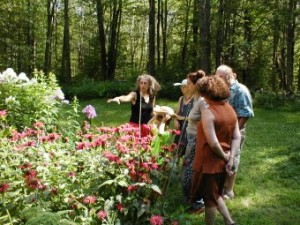
Maraleen giving one of her butterfly garden tours
To see more pictures of the garden tours, click here
As I write this, the Spring Equinox is almost upon us. It is time of renewal and the reawakening of our gardens.
Even in our perennial gardens, there are surprises, delights and challenges every year. Come visit my lovely butterfly gardens this summer of 2012. The dates for the Butterfly Gardens Tours are: Sunday July 15th 10 a.m. to noon and 4:00 to 6:00 p.m. and Sunday, August 12th, 10 a.m. to noon and 4:00 to 6:00 p.m.
Suggested Donation: $10.
The guided garden walks take about an hour and include a walk in a labyrinth. It is followed by Maraleen sharing inspiring stories with an illustrated talk of Butterfly Stories, Myths & Garden Tips. Garden teas and home-made butterfly cookies will be served.
Butterfly art, including Maraleen’s autographed book, The Spirit of Butterflies: Myth, Magic & Art, will be for sale. (There are only 8 books left out of a 12,500 print run)
Make reservations early, these events fill up quickly. tel: 845-657-8073 ormmjbutterfly@hvc.rr.com
Maraleen is available as a Butterfly Garden Consultant. Please contact her at 845-657-8073 or mmjbutterfly@hvc.rr.com
Butterfly gardening not only adds immense beauty, serenity and joy to your life, it is vital in helping to save many species of butterflies, including the monarchs. Butterfly habitats are disappearing at an enormous rate, at least 2.3 million acres a year. In addition to habitat loss, the use of pesticides and herbicides kills caterpillars and butterflies.
The Importance of Butterfly Gardening
Have you heard people say they don’t see as many butterflies as they used to? This is the second summer of my butterfly gardens in Shokan, New York. It is thrilling to see scores of butterflies visiting daily, from little banded hairstreaks, wood nymphs, and skippers to the large great spangled fritillaries, tiger swallowtails and monarchs. Invite them for lunch, and they’ll stay for dinner.
As wonderful guests, they bring joy and beauty to your door. I don’t think we want to wait till our native butterflies are on the verge of disappearing before we take simple steps to invite these beautiful creatures into our gardens and our lives.
There are a litany of reasons why butterfly populations have declined, such as pollution, widespread use of insecticides and herbicides, and tremendous loss of habitat. Deer overpopulation also results in loss of herbaceous forest floor plants which many butterflies need for survival.
Can we actually make a difference if we plant what the butterflies need? You bet we can. Providing habitats for all stages of a butterfly’s life is more than an obscure hobby, it is of vital importance if we don’t want to see them disappear.
There are examples of butterfly species being brought back from the edge of extinction. The people in the town of Wilton, New York made a concerted community-wide effort in the Adirondacks to restore the habitats of the nearly extinct Karner blue butterfly. By massive planting of wild blue lupines, its only host plant, the Karner blue now graces the area each July. Everyone got involved, from school children to community groups to individuals.
Wouldn’t it be grand for all of us, from individuals to schools and community groups, to plant gardens for the butterflies, the birds and the bees? Your region could be known as a haven for butterflies.
Hopefully you have many butterflies already visiting your gardens. If not, September is still not too late to plant a few nectar sources such as pinwheel zinnias, sedums, cosmos, marigolds, sun flowers, and in the fall, milkweed seeds for next year’s butterflies. No matter the season, it is always time to be inspired by butterflies. From spring through autumn we encounter these beautiful creatures. In the winters, their power of transformation informs our dreams and inspires our souls while we plan our gardens to attract them.
There are many reasons for stopping the decline of butterflies: their sheer beauty, their value as pollinators, and planting for local butterflies helps restore native habitat. Butterflies not only pollinate flowers, but also our souls. Witnessing the transformation of caterpillars to butterflies is a continual reminder of our own potential to transform. They have inspired our ancestors for thousands of years in all parts of our planet through myth, art, poetry, music, literature and more than ever in the popular culture. They are symbolic of eternal love, the immortal soul and rebirth.
Butterflies are an ecological symbol, reminding us to take care of our planet, it’s the only one we’ve got. They are the new canaries in the coal mine. If they vanish, it would mean the whole tapestry of life is unraveling beyond repair. If we all gardened with mostly native non-invasive plants, we could make a big difference in keeping our mini-ecosystems vibrant and help not only butterflies, but a myriad of species, thrive and flourish.
Maraleen Manos-Jones has researched the local butterflies in her area, the Northeast, and planted their favorite nectar and host plants. There are about 17,500 species of butterflies worldwide; however, in the Northeast, there are seventy species. She planted all their favorite nectar and necessary host plants for their caterpillars. She considers it
a hopeful sign that scores of butterflies have visited her gardens daily, sometimes more than a hundred a day. Partial list of butterfly nectar plants:
Partial List of Larval Host Plants
Monarch Watch has started a gardening program called Monarch Waystations.
You can officially certify your garden as a Monarch Waystation by planting different types of milkweed on which monarchs can lay their eggs, and various nectar rich plants, as well as offering shelter from storms. Please find out more information by visitingwww.monarchwatch.org.
The National Wildlife Federation also will certify your site as a Backyard Wildlife Habitat if you agree to use native plants and not use pesticides and herbicides. They have guidelines for your garden at www.nwf.org.
Puddling is something that most butterflies need to soak up minerals from damp earth.
Here is a white admiral taking advantage of moist earth: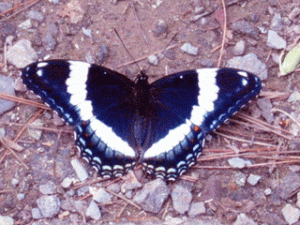 Great spangled fritillary feasting on a marigold |
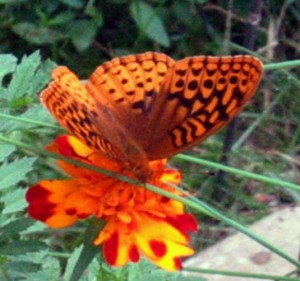
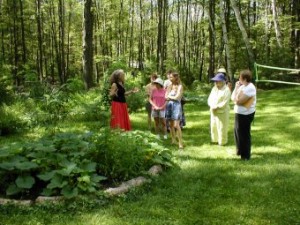
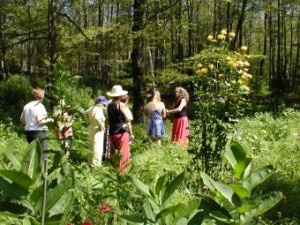
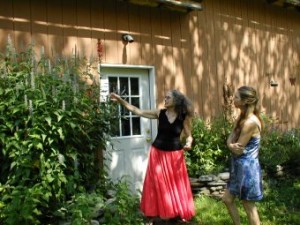

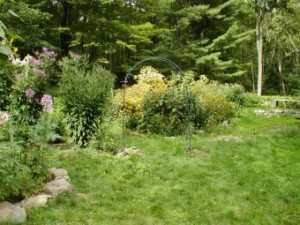
No comments:
Post a Comment